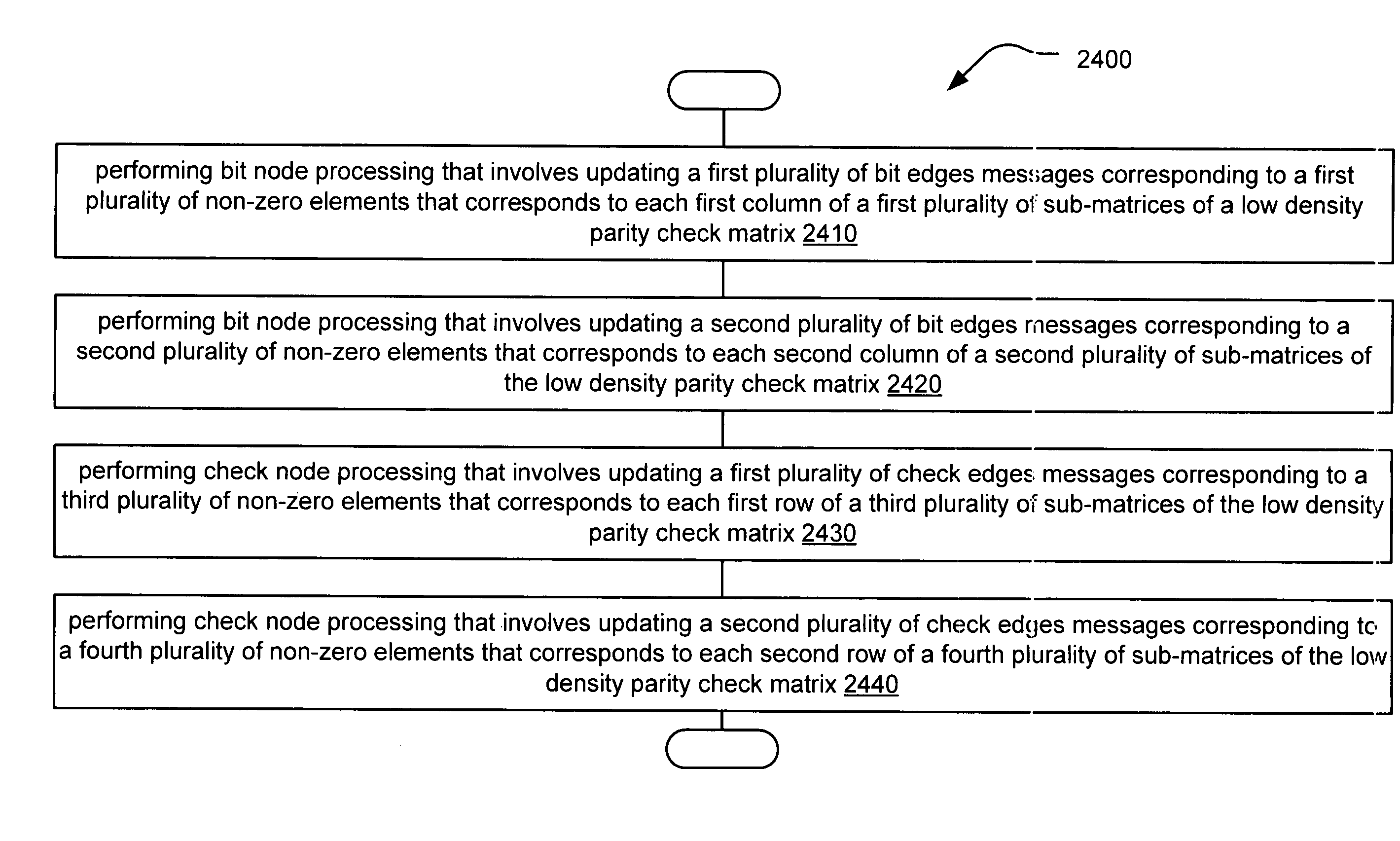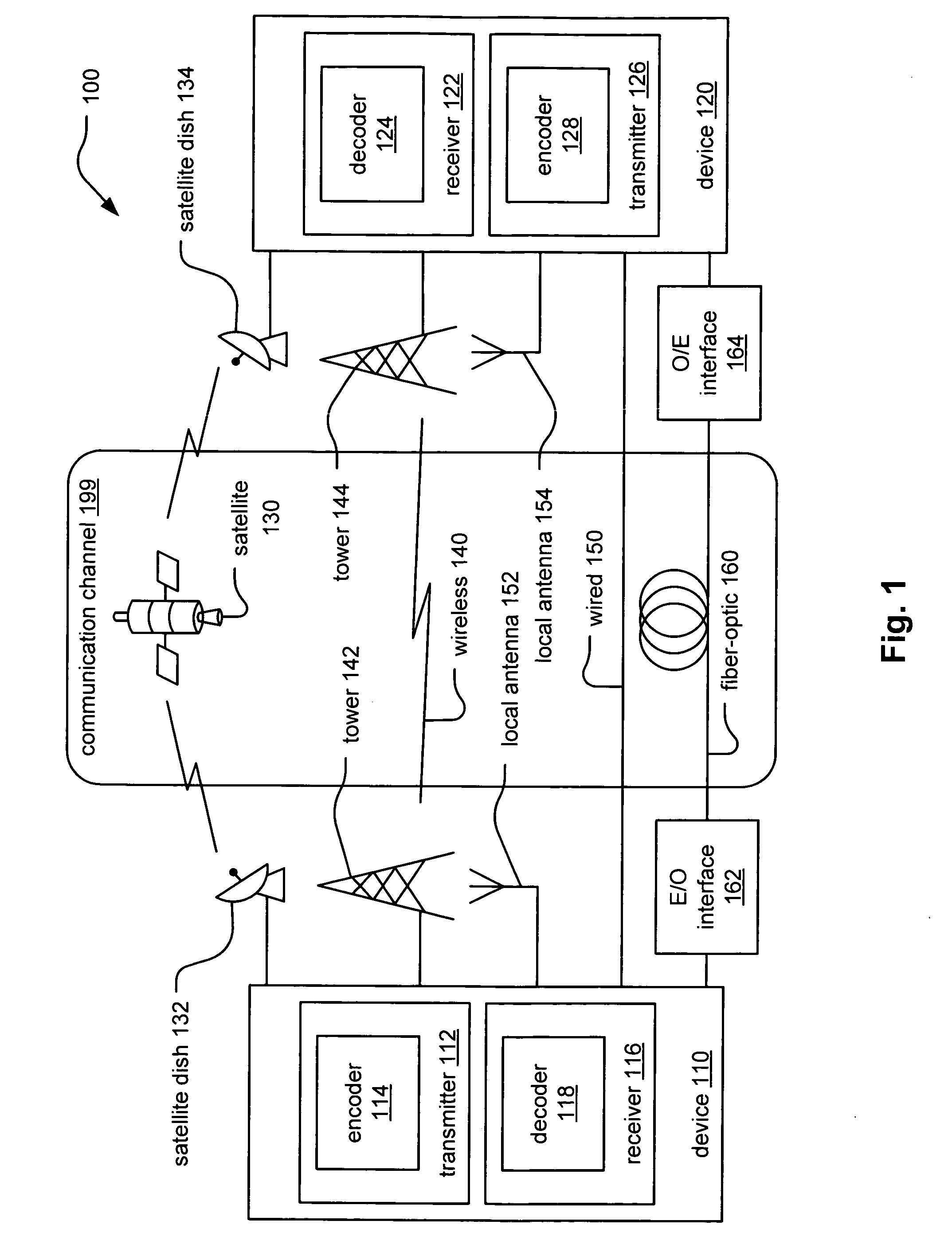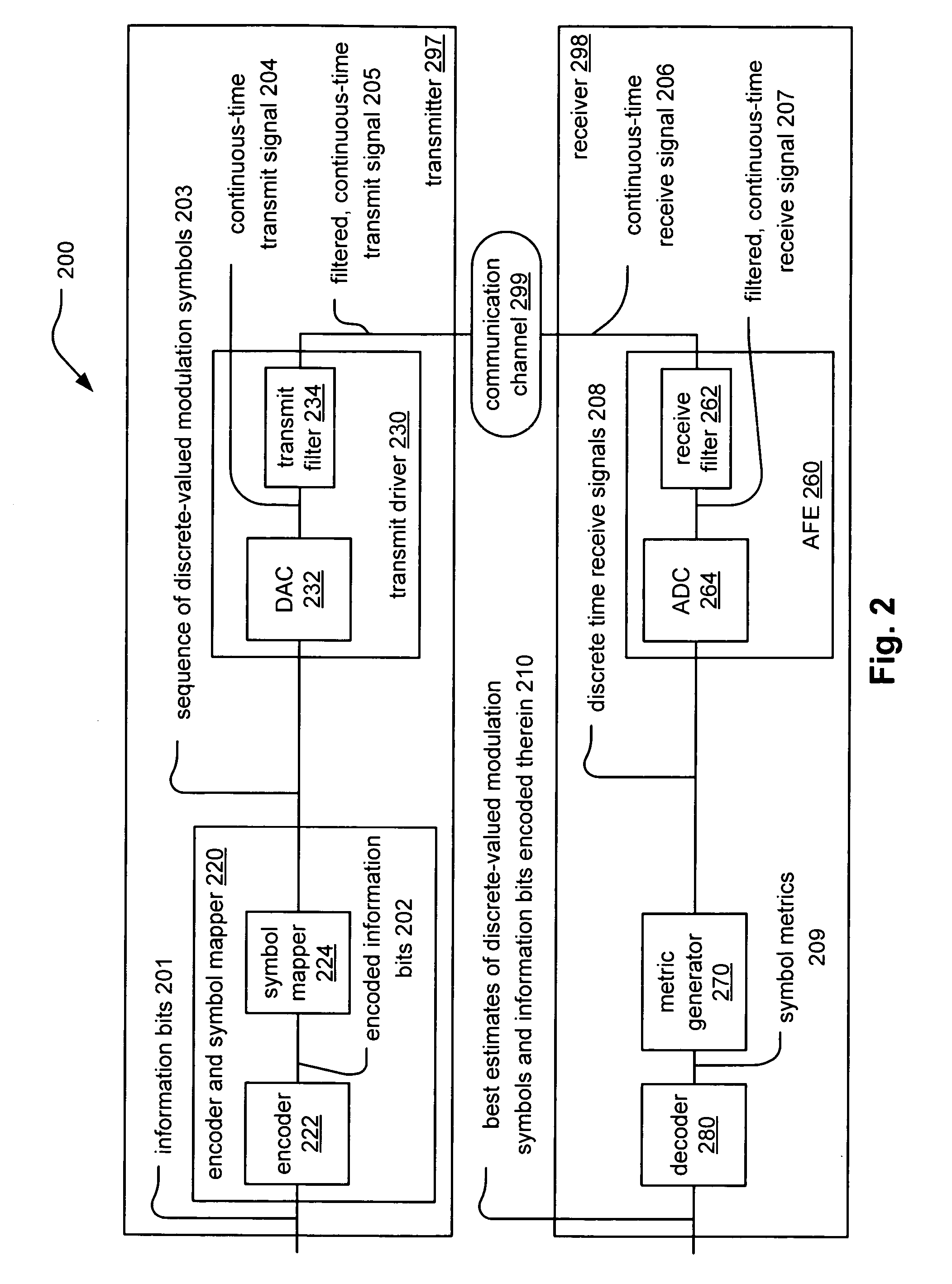Implementation of LDPC (low density parity check) decoder by sweeping through sub-matrices
a sub-matrice and decoder technology, applied in the field of communication systems, can solve problems such as preventing their use in such applications in very high data rate communication system application areas
- Summary
- Abstract
- Description
- Claims
- Application Information
AI Technical Summary
Benefits of technology
Problems solved by technology
Method used
Image
Examples
embodiment 600
[0058]FIG. 6 illustrates an embodiment 600 of a plurality of registers multiplexed among a plurality of bit processors and check processors. In previous designs which implement the decoding in a totally parallel setup, the number of bit nodes of the LDPC code (e.g., which can be extracted from the LDPC bipartite graph) determines the number of bit processors to be employed on a 1 to 1 basis. Similarly, in a totally parallel setup, the number of check nodes of the LDPC code (e.g., which can be extracted from the LDPC bipartite graph) determines the number of check processors to be employed on a 1 to 1 basis. Each of the bit node processing and the check node processing is therefore performed in 1 cycle each. During bit node processing, each bit processor communicates with its corresponding group of registers. During check node processing, each check processor communicates with its corresponding group of registers.
[0059]In such a totally parallel setup, the totally number of bit proce...
embodiment 700
[0066]FIG. 7 illustrates an embodiment 700 of a bit processor 711 and a check processor 731 such that at least one common component (shown by shared component(s) 750) is employed by each. Each of the bit processor 711 and a check processor 731 communicatively couples to a MUX and / or registers as shown by the lines 760.
[0067]This diagram shows how certain components may be shared and used when performing both bit node processing and check node processing by a bit processor 711 and a check processor 731, respectively. This efficiency in terms of reusing certain components can result in a reduction in complexity and a reduction in size (thanks to the re-use of components).
[0068]In some instances, each of the bit node processing and check node processing performs at least one similar calculation, and the functionality employed to perform this calculation can then be employed by each of the bit processor 711 and the check processor 731. For example, the shared component(s) 750 can be as ...
embodiment 800
[0070]FIG. 8 illustrates an embodiment 800 of a low density parity check matrix, H. Several embodiments are depicted below with reference to the general structure of this low density parity check matrix, H. A low density parity check matrix, H, can be extracted from an LDPC bipartite graph (e.g., the one depicted in FIG. 3). It is noted that the low density parity check matrix, H, can correspond to a regular LDPC code or an irregular LDPC code in various embodiments.
[0071]It is noted, in the case of processing irregular LDPC codes, that the number of edges being processed per cycle may not always be the same. For example, one way to transform a regular LDPC code to an irregular LDPC code is to puncture or eliminate some of the non-zero entries therein. In such a case, a regular LDPC code can be considered in which n edges are processed each cycle in a given decoding approach (many embodiments of which are described in more detail below). For example, in one situation, x cycles are p...
PUM
 Login to View More
Login to View More Abstract
Description
Claims
Application Information
 Login to View More
Login to View More - R&D
- Intellectual Property
- Life Sciences
- Materials
- Tech Scout
- Unparalleled Data Quality
- Higher Quality Content
- 60% Fewer Hallucinations
Browse by: Latest US Patents, China's latest patents, Technical Efficacy Thesaurus, Application Domain, Technology Topic, Popular Technical Reports.
© 2025 PatSnap. All rights reserved.Legal|Privacy policy|Modern Slavery Act Transparency Statement|Sitemap|About US| Contact US: help@patsnap.com



